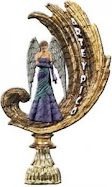Here’s a photograph, taken on Friday, Nov. 28:
That, folks, is a thermometer. It’s the thermometer in my compost. It reads (in case you can’t see it) a hundred and twenty-three degrees Fahrenheit. (123°F.)
Others may be grateful for family, friends, turkey, jobs, whatever; I’m grateful for the compost heap (which I mis-typed as “heat,” a serendipitous error).
I built this heap on Tuesday the 18th, the day before surgery, and in the days just after, husband Steve brought me progress reports: 120° on Thursday, 140° on Friday. On Saturday I hobbled out to see for myself: 140°.

 Subscribe to RSS feed
Subscribe to RSS feed


